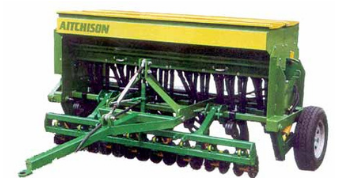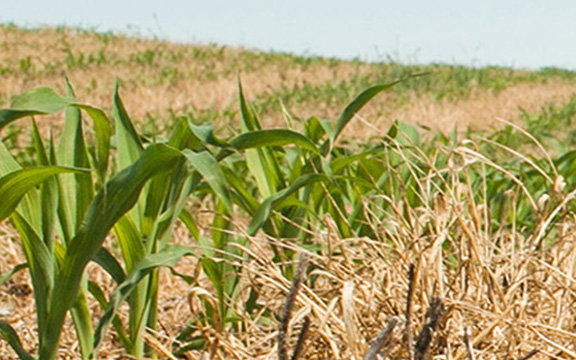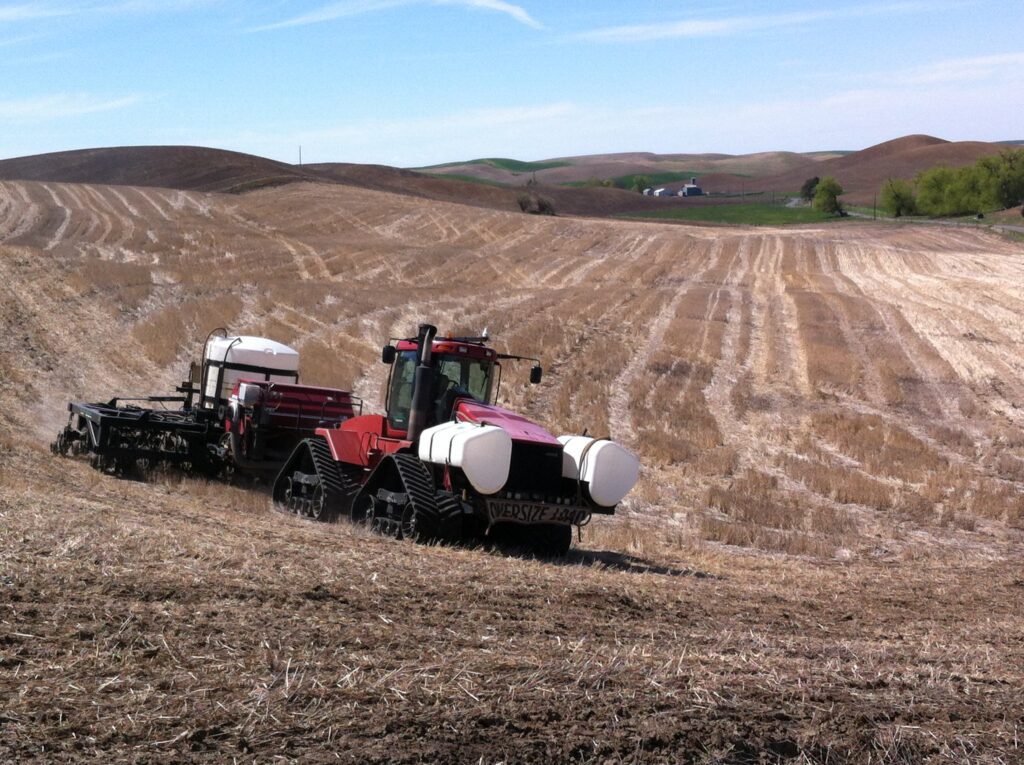No-Till & Direct Seed

Enjoy the Benefits of Conservation Tillage
Eastern Klickitat Conservation District (EKCD) makes direct seed and conservation tillage more affordable and accessible for local farmers by offering a low-cost no-till drill rental and low-interest loans for equipment.
No-Till Drill Rental
No-till drills are a tool to support conservation tillage. Farmers intentionally leave residue from the previous year’s crop on the soil surface and then use the specialized no-till drill planter to cut through residue and establish seed for their new crop with minimal soil disturbance.
How Do I Rent the No-Till Drill?
Contact EKCD today (509-773-5823 x5) to learn more about our drill or reserve it.
- A fully refundable $250.00 deposit is required, and the rental rate is $5.00/acre ($20.00 minimum).
- You will need a tractor with a 3-point hitch and least 45 horsepower.
- The drill can be transported behind a pick-up truck with a 2-inch ball hitch.
Who We Are
EKCD is your community-based hub of natural resource expertise, funding, and non-regulatory assistance.


Direct Seed Loan Program
We partner with Spokane Conservation District to offer a Direct Seed Loan Program makes it easy for you to switch to direct seed and no-tillage operations as we offer low-interest loans to producers for major agricultural equipment purchases that:
- Aid in the direct placement of seed and/or fertilizers in one or two passes
- Aid in the removal or management of residue
To be eligible you must farm within the boundaries of our conservation district.
How to Get Started
Loan Criteria
- Applicant must farm in one of the designated counties or within the boundaries of one of the conservation districts participating in the program.
- The loan-to-value ratio shall not exceed 75% based on the cost or appraised value of the collateral.
- Applicant must verify a down payment of 25% on the implementation before loan money is distributed.
- Contracts range in length from five to 10 years. The first payment is due one year from the date the funds are dispersed.
- Applicant shall furnish a letter from their primary lender approving additional debt incurred by applicant and a copy of the invoice from the seller of the equipment showing make, model, serial number, purchase price, and any trade-in allowance.
- Spokane Conservation District shall have the first position as lien holder on the UCC file for the implementation.
- Applicant must provide proof of full coverage insurance with the Spokane Conservation District listed as the loss payee on financed equipment.
- Operators receiving loans shall assist the District in assessing the impact of implementation on water quality (erosion rates) for the duration of the loan.
Eligible Equipment
Implements that aid in the direct placement of seed and/or fertilizer in one or two passes:
- No-tillage and direct seed drills
- Fertilizer placement implements
- Sprayers
- Tractors
Implements that aid in the removal or management of residue:
- Heavy harrows
- Mowers/shredders
- Swathers
- Balers and bale handling equipment
- Combines
Contact EKCD today (509-773-5823 x5) to learn more about the program.
Benefits of No-Till / Direct Seed
Conservation Benefits
- Improves soil tilth: a no-till system increases aggregation making it easier for plants to establish roots with minimized compaction.
- Reduces soil erosion: crop residues on the soil surface reduce the erosion caused by water and wind. Depending on the amount of residue present, soil erosion can be reduced by up to 90% compared to an unprotected, intensively tilled field.
- Improves water quality: crop residue helps hold soil along with associated nutrients (particularly phosphorous) and pesticides on the field to reduce runoff into surface water.
- Improves air quality: crop residue left on the surface improves air quality through reduced wind erosion. Air quality is also improved due to fewer emissions from equipment making fewer trips across the field.
- Moisture Savings: direct seeding buildings a protective mulch on the soil surface which reduces the impact of raindrops, buffers the soil from temperature extremes, and reduces soil moisture evaporation. More moisture gets into the soil and more moisture stays in the soil where crops can utilize it for increased productivity.
Economic Benefits
An independent financial analysis was conducted on our Direct Seed Mentoring Program by the University of Idaho. The analysis showed that direct seeding, versus conventional tillage (on a spring grain crop):
- Reduced labor costs by 50%
- Saved 42% on fuel & lubrication costs
- Reduced repairs (parts & labor) by 20%
- Increased capital recovery by 20%
- Had an overall savings of approximately $13.50 per acre.
By using direct seeding there are fewer passes over the field, which results in less fuel needed, less labor required, and less wear and tear placed on the machinery. It truly is the way to work smarter, not harder!

